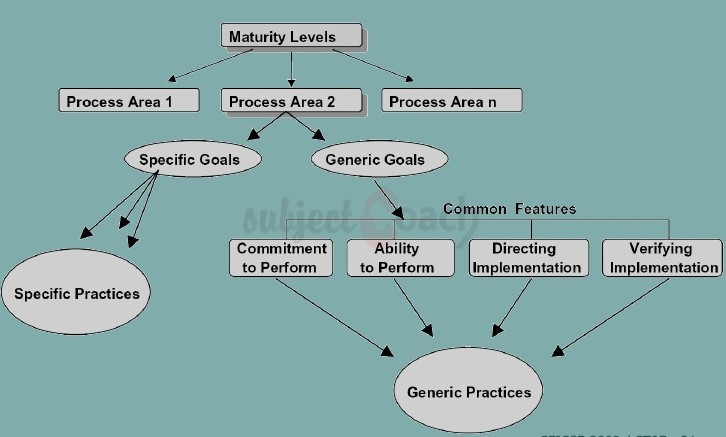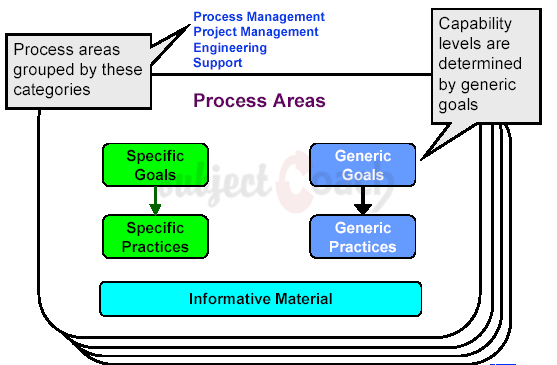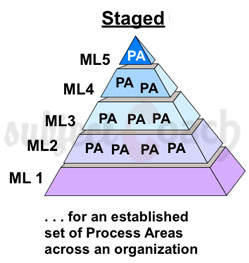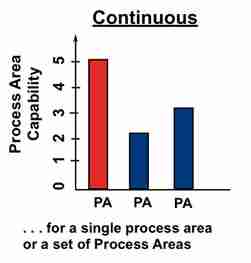Getting Started with SEI CMMI
Chapters
SEI CMMI-Representations
The CMMI is structured as follows:
Model components of CMMI:
- Process Areas
- Specific Goals
- Specific Practices
- Generic Goals
- Generic practices
In CMMI models, process areas are requirements management, systems integration, configuration management, product verification, and many others.
Representations in more detail.
Staged Representation:
In the staged representation, the summary components are part of maturity levels. Within each maturity level contains common goals, features and practices.
Common features of stages Representation:
- Commitment to perform includes practices that ensure that the process is well established. It typically involves establishing organizational policies and leadership.
- Ability to perform includes best practices that establish the necessary conditions for implementing the process. It involves plans, organizational structures, resources and training.
- Activities performed include practices that directly implement a process. These practices differentiate a process area from others.
- Reviews and audits ensure best practice with requirement of process areas.
CMMI Staged Structure:
Below picture describes the Staged structure.

Continuous Representation:
In the continuous illustration of CMMI model, the component summary is area of process. Within each process there are goals specific practices are implemented within each process.
- Help to enables comparisons within organisations on process area by process area basis.
- Capability rating is received.
- EIA 731 are provides an easy migration.
CMMI Continuous Structure:
Below picture describes the Continuous structure:

Continuous vs Staged Representations:
|
Continuous Representation |
Staged Representation |
|
Provides maximum flexibility for specific process areas according to objectives and business goals. |
Provides implementation
|
|
Transitioning from EIA 731 with the help of familiar structure. |
Transitioning from the Software CMM with the help of familiar structure. |
|
Capability levels are used to measure Process improvement. |
Maturity levels are used to measure Process improvement. |
|
Organizational maturity is the “maturity” of a set of processes across an organization. |
Process area capability is the “maturity” of a particular process across an organization. |
Which Representation is better?
Some organizations use both representations to address particular needs at times in their programs. As each representation have advantages over the other.
- Staged representation focus on Organizational maturity, whereas continuous representations focus on capability process area.
In the Staged diagram ML indicates Maturity Level and in the Continuous diagram PA indicates Process Area as shown below.
 |
 |
Description
This tutorial is an Introduction to SEI CMMI, This tutorial is sub divided into 9 parts listed below
CONTENTS
Part 1 Introduction
Part 2 Models-Disciplines
Part 3 Representations
Part 4 Maturity Levels
Part 5 Capability Levels
Part 6 Key Process Areas
Part 7 Appraisals
Part 8 Players-Roles & Responsibilities
Part 9 Summary
We hope that you will benefit from this tutorial.
Author: Subject Coach
Added on: 16th Feb 2015
You must be logged in as Student to ask a Question.
None just yet!